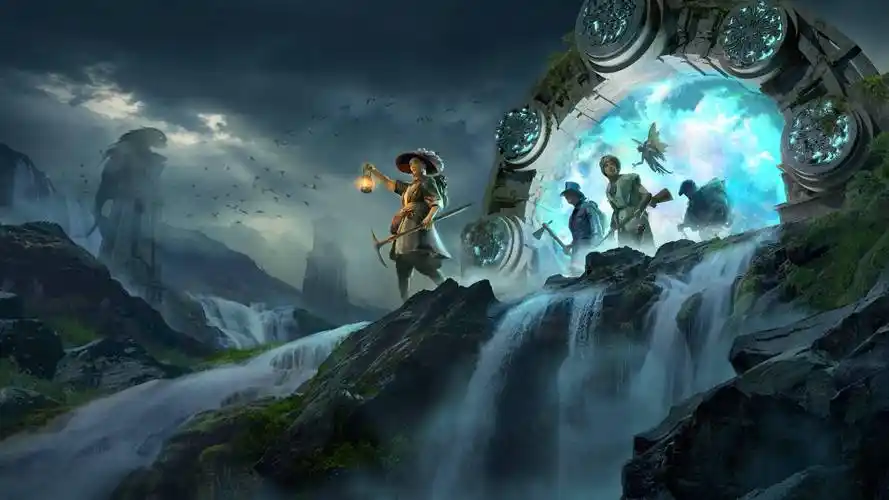Title: The Siren's Call: How the 'Mermaid Song Shelter Sign Installer Simulator VR' Place Missions Update Redefines Immersive Empathy
The virtual reality landscape is often dominated by the loud, the explosive, and the fantastical. We scale mountains, battle dragons, and pilot starships at impossible speeds. But nestled in a quieter, more profound corner of the VR ecosystem exists an experience that is, on its surface, almost absurdly niche: Mermaid Song Shelter Sign Installer Simulator VR. For the uninitiated, the title itself is a narrative. It’s a game where you play a deep-sea artisan, tasked with installing luminous, sonar-activated signage that guides aquatic life to designated sanctuaries, safe from pollution and sonar interference. Its core gameplay is a meditative loop of navigating serene, often terrifyingly vast underwater vistas, and performing intricate, physics-based installation tasks. It was a beloved cult hit for its ambience and unique premise. But with its latest ‘Place Missions’ update, the developers haven’t just added content; they have fundamentally evolved the game from a simulator into a powerful engine for empathetic storytelling.
Previously, a "mission" was a logistical challenge: Install the Sign at Coordinates X. The ‘why’ was implied in the game’s lore but remained abstract. The new Place Missions shatter that abstraction. Each new mission is no longer a set of coordinates; it’s a story waiting at a specific, painstakingly crafted location.
One of the first Place Missions, "The Grieving Leviathan," exemplifies this shift. Your objective isn't just to install a sign near a deep-sea trench. As you descend in your submersible, the gentle, guiding melody of the mermaid song (a stunningly rendered ethereal choir of whale song and synthesized harmonies) is intermittently drowned out by a low, agonized drone. Following the sound, you find a colossal sperm whale, its massive form listlessly circling the jagged trench walls. Scattered around it are the bleached, broken remains of a squid-like alien creature—a species you’ve only ever seen in vibrant, living hues in the game's codex. The mission brief updates, not with technical instructions, but with a biologist’s voice, cracking with emotion: "We think her pod was caught in a tectonic shift. She’s the only one left. She won’t leave this place. Our hope is that the shelter’s song can offer a new frequency for her, a new reason to swim on."
Suddenly, the act of installing the sign is imbued with a crushing, beautiful weight. The meticulous process of drilling into the rock, calibrating the sign’s resonance, and securing its housing becomes a sacred act. You’re not just completing a task; you’re building a memorial and a beacon of hope. The game’s physics, once a test of skill, now feel like a deliberate, respectful ritual. You move slower, more carefully, as if the whale’ grief is a tangible force in the water.
Another mission, "The Garden of Silent Chimes," explores a different tone. You are sent to a previously uncharted hydrothermal vent field where the natural mineral formations act as a giant, natural wind chime, creating a chaotic yet harmonious soundscape that local creatures use for navigation. However, a recent illegal mining operation has left several key formations shattered and silent. The mission is one of restoration. Using a new tool introduced in the update—a sonic welder that uses specific resonant frequencies to fuse rock—you must painstakingly repair the broken chimes. The success condition isn’t just a installed sign; it’s the restoration of the natural symphony. As you fix each formation, the ambient sound of the area changes, layering in new notes until the original, complex melody returns, and shy, bioluminescent creatures emerge from hiding to dance in the rejuvenated currents.
The update leverages VR’s greatest strength: a profound sense of presence. Reading a data pad entry about ecological disaster is one thing. But in VR, you are there. You are a tiny, vulnerable entity in the face of a grieving creature the size of a building. You feel the immense, silent pressure of the abyss in the darkness beyond your submersible’s lights. You see the delicate, ghostly tendrils of a jellyfish drift past your faceplate. The Place Missions weaponize this presence for empathy. They force you to linger, to observe, and to understand the consequence of the world’s silence—a silence often caused by off-screen, human-like folly.
The Mermaid Song itself, the game’s central mechanic, transforms. It’s no longer just a gameplay trigger. In the context of these stories, it becomes a language. It’s a lullaby for the bereaved, a welcome song for the lost, and a reclamation of a soundscape from the cacophony of industrial exploitation. You, the installer, become a composer of safe havens, one resonant sign at a time.
The ‘Place Missions’ update is a masterclass in environmental storytelling. It proves that the most powerful VR experiences aren’t those that simulate action, but those that simulate consequence and emotion. It takes a joke of a premise—a mermaid sign installer—and reveals the profound truth at its core: that care-taking, restoration, and the quiet, diligent work of building shelters in a broken world is perhaps one of the most heroic and immersive narratives we can experience. It’s no longer a simulator; it’s a series of underwater pilgrimages, and we are all the more human for having taken them.
Tags: #VRGaming #VirtualReality #GamingNews #IndieGames #SimulatorGames #EmpathyGames #EnvironmentalStorytelling #ImmersiveTech #MermaidSongShelter #GameUpdate #PCVR #MetaQuest















